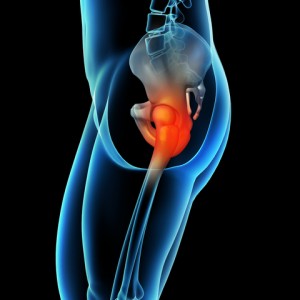Location, Location, Location. What the diagnosis of hip pain really comes down to.
Posted by Dr. Will Enright
The mantra of real estate has equal importance in the diagnosis and treatment of hip pain.

When a patient comes to the office with hip pain a good portion of the visit is spent discussing where the hip hurts. There are three typical locations of “hip” pain: front, side, and back. Communicating where the pain is located helps your doctor determine the cause of the pain.
Front
Pain in the front of the hip, or groin, is true hip pain. This is the typical location of pain when there is pathology within the ball and socket joint itself. In young patients this can be caused by a labral tear or impingement. In older patients groin pain is typically from arthritis of the hip.
Side
Lateral pain, or pain on the outside of the hip, is typically caused by irritation or inflammation in the area where the iliotibial (IT) band comes into contact with the uppermost part of the thigh bone, the greater trochanter. Traditionally this has been referred to as “trochanteric bursitis”. We now refer to this as “peritrochanteric pain” because it is more inclusive of the problems that can cause lateral hip pain. These include IT band syndrome, hip abductor tendon tears, and bursitis.
Back
Posterior hip pain is most often caused by a pinched nerve in the lumbar spine. Nerves in the lumbar spine are pinched when a disk herniates or there are bone spurs pressing on the nerve. In addition to buttock pain, patients can experience pain radiating down the back of the leg to the foot. If pain radiates past the knee, it is likely nerve pain.
If you are experiencing hip pain, pay close attention to where it hurts. This information will help your doctor choose the most appropriate treatment.









